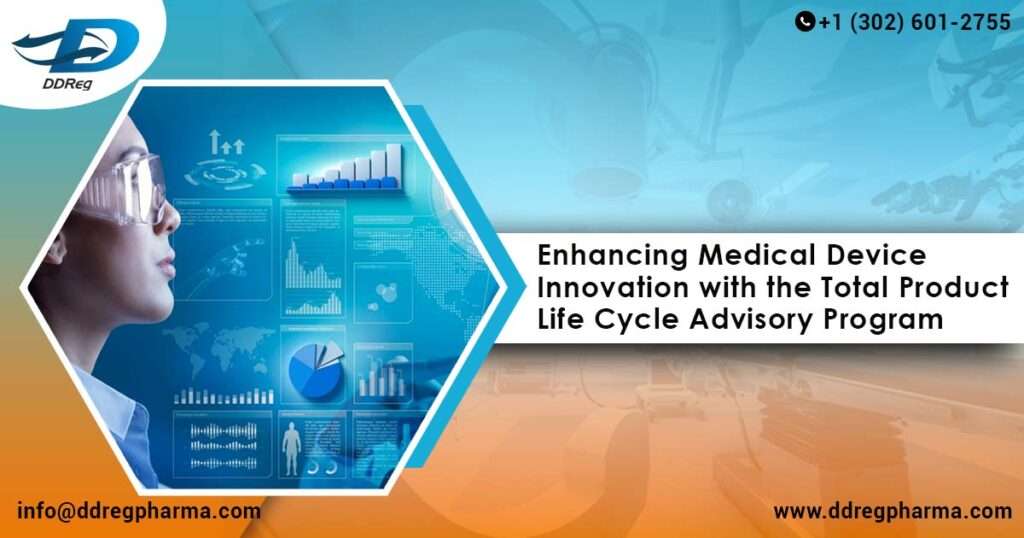The medical device industry is driven by constant technological advancements and the need to meet growing patient demands. Ensuring that these innovations are safe, effective, and reach the market promptly is a critical aspect of public health. To address this need, the FDA has implemented the Total Product Life Cycle (TPLC) Advisory Program (TAP), a novel initiative aimed at enhancing the development and regulatory review process for medical devices.
What is the TAP Program?
The Total Product Life Cycle Advisory Program (TAP) is an initiative by the FDA’s Center for Devices and Radiological Health (CDRH) designed to provide more comprehensive support to medical device developers throughout the entire life cycle of their products. From the early concept phase through premarket development, approval, and post-market monitoring, TAP seeks to streamline and optimize the journey of medical devices from idea to market.
The program’s primary objective is to foster innovation in medical device development while ensuring that patient safety and product efficacy remain paramount. TAP offers a collaborative environment where the FDA works closely with device manufacturers, providing them with tailored advice and guidance at critical stages of the product development process. This proactive approach helps identify potential regulatory hurdles early, thereby reducing delays and increasing the likelihood of successful market entry.
Eligibility for the TAP Program
The TAP Program is planned to support medical device sponsors in developing high-priority devices that can significantly improve patient care. The program is particularly focused on novel technologies that address unmet medical needs, have the potential for significant public health impact, or represent advancements in areas where current treatment options are limited. Eligibility for the TAP Program is determined based on several factors, including the device’s potential benefit to patients, the novelty of the technology, and the complexity of the regulatory pathway. Devices that qualify for inclusion in the TAP Program typically fall into one of the following categories:
- Breakthrough Devices: Devices that provide for more effective treatment or diagnosis of life-threatening or irreversibly debilitating diseases or conditions, and that represent breakthrough technology.
- Emerging Technologies: Devices that incorporate cutting-edge technologies or novel applications that have the potential to significantly advance patient care.
- High-Priority Devices: Devices that address critical public health needs or that have the potential to significantly impact public health.
The selection process for the TAP Program is rigorous, with the FDA carefully evaluating the potential benefits of each device, its impact on patient care, and the readiness of the technology for regulatory support. Devices selected for the program benefit from enhanced FDA engagement, including early interaction with regulatory experts, detailed feedback on regulatory strategies, and ongoing support throughout the product’s life cycle.
TAP Expansion and Performance Metrics
The TAP Pilot is being implemented in phases over the duration of MDUFA V, from fiscal years (FY) 2023 to 2027. Initially, the program enrolled up to 15 devices in FY 2023, focusing on those reviewed by the Office of Cardiovascular Devices (OHT2). In FY 2024, TAP will expand to include up to 60 devices reviewed by OHT2 and the Office of Neurological and Physical Medicine Devices (OHT5). By FY 2027, TAP aims to enroll up to 325 devices annually, potentially expanding to additional Offices of Health Technology within the CDRH.
The FDA has established several performance metrics to ensure the success of TAP. These include prompt engagement with participants, timely written feedback on device-related topics, and the result of high response rates to participant requests for interaction.
Facilitating Non-FDA Engagement
One of TAP’s unique strengths is its ability to facilitate early and strategic engagement with non-FDA parties. This interaction can be invaluable for device developers as they work to understand patient perspectives, develop clinical evidence, and navigate reimbursement pathways. Although TAP does not organize these engagements, it provides a framework that encourages TAP participants to seek external input that can enhance their device development strategies.
What’s Next for TAP?
CDRH is committed to expanding TAP to include more clinical areas and to continue fostering innovation in the medical device sector. In October 2024, the program will extend to devices reviewed by the Office of Radiological Health (OHT8) and the Division of Ophthalmic Devices (DHT1A). Further expansion is planned for January 2025, with the inclusion of the Office of Orthopedic Devices (OHT6).
Conclusion
By fostering early collaboration, engaging a diverse range of stakeholders, and providing dedicated expert guidance, TAP is creating a clearer and faster path to market for breakthrough medical technologies. With its patient-centric approach and focus on real-world application, TAP is not just accelerating device approval—it’s ensuring that these innovations truly satisfy the needs of the patients they aim to serve.
With a knowledge base of over 120 regulatory agencies, deep subject matter expertise, industry knowledge, and access to in-house RegTech software, DDReg provides end-to-end regulatory services and safety solutions for medical devices. Reach out to the experts for more information. Ensuring Transparency for Machine Learning-Enabled Medical Devices

